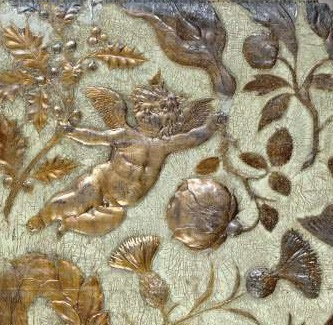Sommer, D. V. P.; Mühlen Axelsson, K.; Collins, M. J.; Fiddyment, S.; Bredal-Jørgensen, J.; Simonsen, K. P.; Lauridsen, C. B.; Larsen, R., “Multiple Microanalyses of a Sample from the Vinland Map", Archaeometry 59(2) (2017) 287–301.
Doi:10.1111/arcm.12249 (Wiley Online Library, restricted access)
Doi:10.1111/arcm.12249 (Wiley Online Library, restricted access)
Abstract:
A sample of the Vinland Map remaining from the radiocarbon dating was analysed with the purpose of identifying the post-1950 contaminant and establishing other evidence on the material composition, identity and condition. The analyses revealed that the parchment originates from a bovid and contains hair remnants. The fibre structure was in poor condition, with fragmented collagen fibres and a low hydrothermal stability. Greenish and reddish particles were observed on the parchment. The greenish particles were identified as basic copper(II) chloride, most probably atacamite, and the reddish particles as rust; that is, various iron(III) oxides. The extracted modern contaminant was identified as being naturally produced glycerol monostearate.


